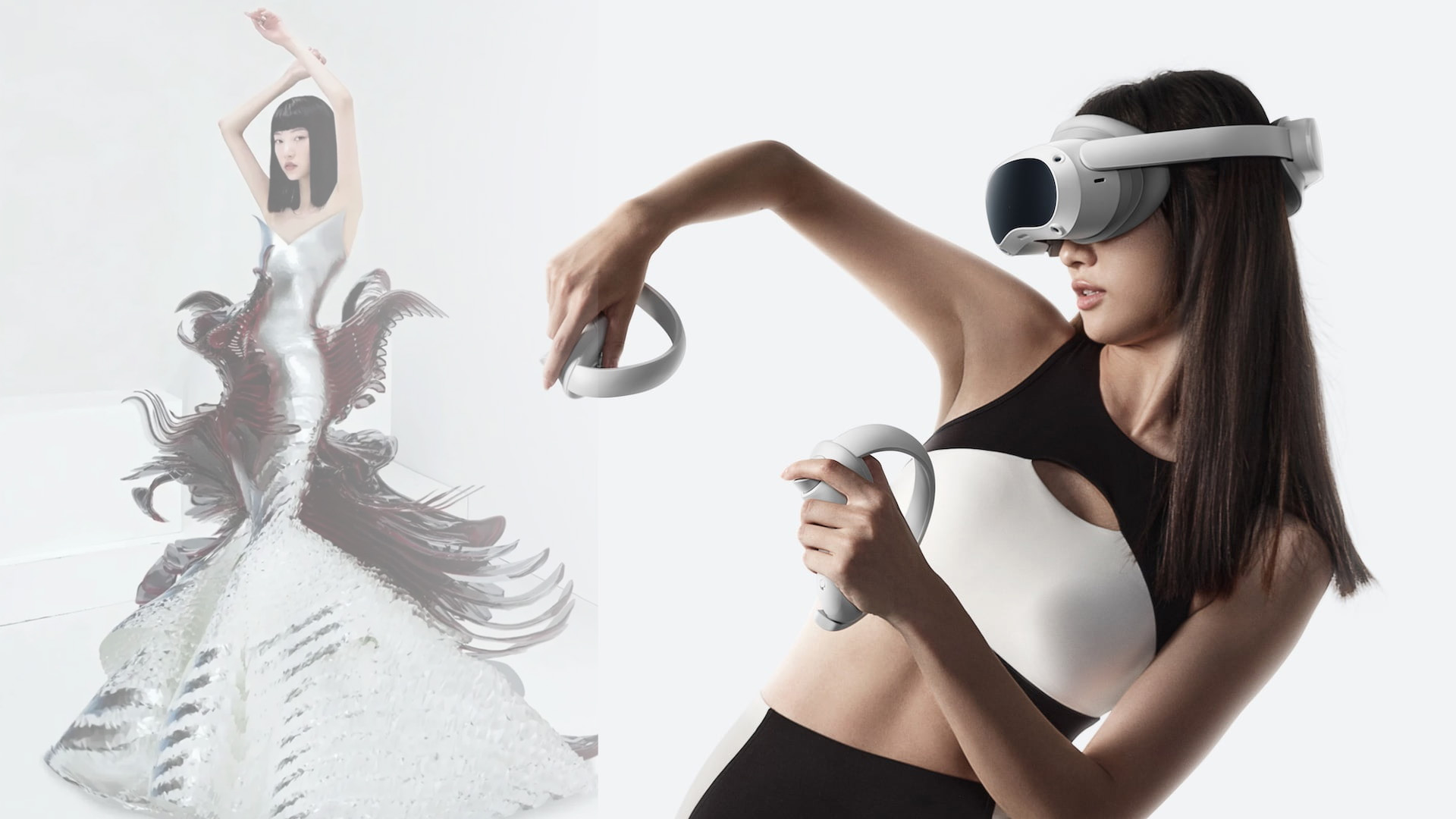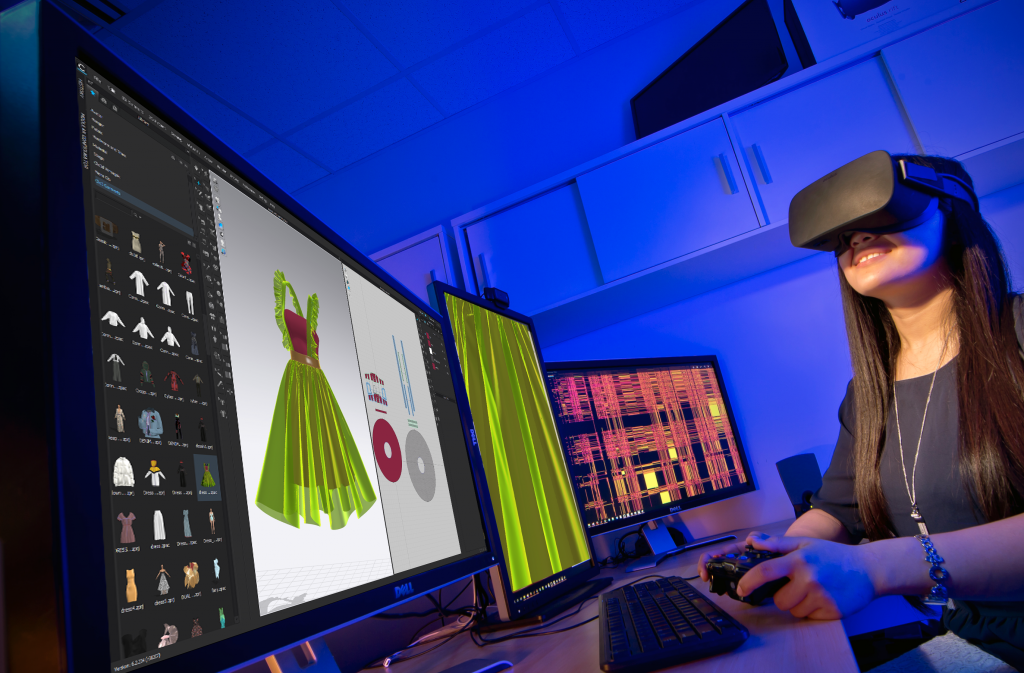The fashion industry is increasingly using AR.

Why Is this happening?
First, let’s define the terms of virtual try-on as a part of the digital transformation.
Virtual Try-On: The technology that allows customers to virtually try on clothes, accessories, and cosmetics without physically being present in a store. By using their smartphones or AR-enabled devices, users can overlay virtual garments onto their bodies and see how they would look. This trend has gained significant momentum, especially in the e-commerce space, as it helps customers make informed purchase decisions.
We all know the interactive shopping experience is the must important for the users. AR is being used to enhance in-store shopping experiences by providing interactive and engaging elements. Retailers can deploy AR mirrors or screens that allow customers to virtually “try on” different outfits, experiment with various styles, and even receive personalized recommendations based on their preferences and body measurements.
Where else could we use AR technology?
Fashion shows are incorporating AR elements to enhance the runway experience. Virtual models, virtual clothing, and digital effects can be integrated into live fashion shows, blurring the boundaries between physical and digital presentations. This trend opens up new possibilities for creativity and storytelling within the fashion industry.
Virtual Showrooms and Virtual Retail Spaces: AR is enabling the creation of virtual showrooms and virtual retail spaces. Brands can design immersive virtual environments where customers can explore and interact with their products. This approach provides an innovative way to showcase collections, create brand experiences, and reach a global audience without the limitations of physical locations.
The fashion industry is increasingly using AR.apps on mobile devices and headsets too. Many fashion brands and retailers are developing dedicated AR fashion apps that offer unique features and experiences. These apps can include virtual fitting rooms, style guides, AR-powered lookbooks, and even AR games or filters that allow users to virtually accessorize and customize their outfits.
AR Accessories: AR is not limited to clothing; it can also enhance the experience of accessories such as jewelry, eyewear, and handbags. AR can enable virtual try-ons for these items, showcase intricate details, provide additional information, or create interactive elements that engage customers in novel ways.
These trends indicate how AR technology is reshaping the fashion industry by merging the digital and physical realms, enhancing customer engagement, and providing new avenues for creativity and personalization. It’s important to note that the fashion industry is continuously evolving, and new AR applications and trends may emerge as technology progresses.

Why is AR becoming popular? Let’s see some example:
Augmented reality (AR) has gained popularity in the fashion industry due to several key factors:
Enhanced Customer Engagement: AR provides an interactive and immersive experience for customers, allowing them to actively engage with fashion products. Virtual try-on experiences, where customers can visualize how clothing or accessories will look on them without physically trying them on, create a more engaging and personalized shopping experience. This increased engagement can lead to higher customer satisfaction and conversion rates.
Overcoming Physical Limitations: AR technology enables customers to overcome physical limitations associated with traditional shopping experiences. Customers can try on a wide range of clothing styles and sizes virtually, eliminating the constraints of available inventory in physical stores. AR also allows customers to see how garments will fit and look on their own bodies, helping them make more confident purchase decisions.
Bridging Online and Offline Retail: AR helps bridge the gap between online and offline retail experiences. It allows customers to access virtual try-on features, style guides, and personalized recommendations from the comfort of their own homes or while browsing in physical stores. This seamless integration creates a unified shopping experience and increases brand loyalty.
Novelty and Innovation: The fashion industry thrives on novelty and innovation, and AR provides a fresh and cutting-edge approach. Fashion brands that adopt AR technology can differentiate themselves from competitors and create a buzz around their products. By embracing AR, brands demonstrate their commitment to embracing emerging technologies and staying at the forefront of fashion trends.
Social Media Appeal: AR experiences in fashion can easily be shared on social media platforms, leading to increased brand visibility and social engagement. Users can share their virtual try-on experiences, outfit creations, and personalized AR filters, generating user-generated content that promotes the brand. This viral nature of AR in fashion helps brands reach a wider audience and build brand awareness.
Convenience and Accessibility: AR brings convenience and accessibility to the fashion industry. Customers can virtually try on clothes or experiment with different styles without the need to travel to physical stores. This accessibility benefits individuals with limited mobility or those in geographically remote locations, broadening the reach of fashion brands.
These factors have contributed to the growing popularity of AR in fashion, as brands recognize the value it brings in terms of customer engagement, personalization, innovation, and social media visibility. By embracing AR technology, fashion brands can provide unique and memorable experiences that resonate with today’s tech-savvy consumers.
“Do you want to learn more? Then ask our team.” https://nftag.co.uk/#get_in_touch
